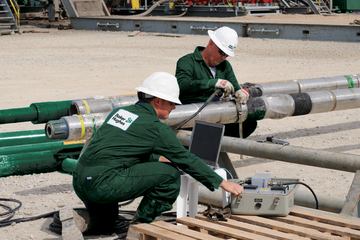Overview
Challenges
- High-resistivity formation and complex reservoir environment challenged LWD logging
- Hostile geological environment included multiple fractures, washouts in mudstone formations, and tendency for high stick-slip vibrations
- Highly deviated wells with inclinations from 35° to 45° created deployment challenges for wireline
- Third-party LWD tools required a drop in ROP to capture data at required density
Results
- Collected high-quality resistivity measurements in complex reservoir environment to make real-time geostopping decisions
- Successfully reached target depth in multiple wells, drilling a total of 7,638 ft in 212 hours with no ROP reduction
- Reduced operational time while eliminating additional wireline logging runs
- Mitigated operating risks and ensured flawless execution through close cross-discipline collaboration
An operator drilling exploratory wells in Colombia required high-density logging-while-drilling (LWD) data to effectively geosteer through a complex formation characterized by high resistivity, multiple fractures, stick-slip vibrations, and a risk of washouts in some mudstone layers.
The operation required high-quality, real-time resistivity data to improve geostopping decisions and avoid dropping angle in some intervals. Simultaneously, the operator wanted to avoid the rig time of separate wireline runs to collect the resistivity data in the highly deviated wells (with inclinations from 35° to 45°).
As an alternative to wireline, the operator considered placing a resistivity sensor in the bottomhole assembly (BHA).
The resistivity tools of other service providers required lower rates of penetration (ROPs) to minimize vibrational effects and collect LWD data at the required density and depth of investigation (DOI), which added time and cost to the drilling operation.
The operator asked Baker Hughes for a reservoir characterization solution that provided high-density resistivity data without sacrificing ROP. Baker Hughes proposed its StarTrak™ ML imaging service, which operates reliably in high-vibration drilling environments to generate multi-laterolog resistivity and high-resolution images at the required DOI.


